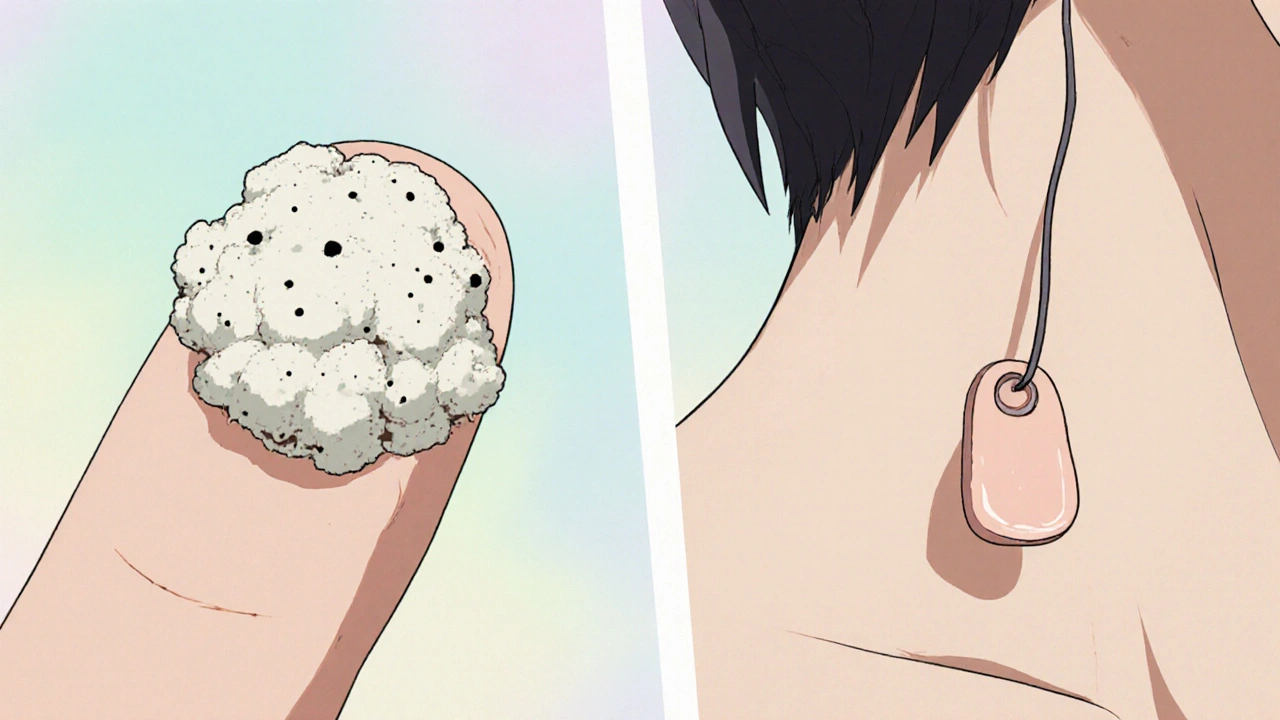Warts: Causes, Treatments, and What Actually Works
When you see a rough, bumpy patch on your hand, foot, or face, it’s often a wart, a harmless but stubborn skin growth caused by the human papillomavirus (HPV). Also known as viral warts, they’re not dangerous—but they’re annoying, contagious, and sometimes painful, especially when they show up on your feet. Warts aren’t just a kid thing. Adults get them too, often from touching surfaces like gym floors, public showers, or even sharing towels. The virus enters through tiny cuts or dry skin, and once it’s in, your immune system might ignore it for months—or never notice it at all.
Not all warts are the same. Plantar warts, grow on the soles of your feet and feel like pebbles underfoot, while flat warts, small and smooth, often cluster on the face or legs. Genital warts, a different strain of HPV, require medical attention and aren’t covered here. The ones you see on hands or fingers? Those are common warts. They’re spread by direct skin contact, but you don’t need to be in close quarters with someone who has them—you can pick them up from a doorknob, a keyboard, or a locker room bench.
Most warts go away on their own, but that could take months or even years. If you’re tired of hiding your hands or limping because of a foot wart, you have options. Over-the-counter salicylic acid works for many people if used daily for weeks. Freezing kits with liquid nitrogen are popular too, but they’re less effective than professional cryotherapy. Some swear by duct tape, and yes, there’s real science behind it—covering the wart may starve the virus of air and trigger your immune system to attack it. Prescription treatments like imiquimod or cantharidin are stronger, but they’re not magic. Surgery or laser removal? Only if everything else fails. The key is consistency. Warts don’t vanish overnight, and skipping treatments makes them come back.
What you won’t find in most guides? Why some people get warts and others don’t. It’s not about being "dirty." It’s about your immune system’s response to HPV. People with weakened immunity, eczema, or who bite their nails are more likely to develop them. That’s why kids and teens get them more often—their immune systems are still learning how to fight off common viruses. And if you’ve had one wart, you’re more likely to get another. The virus stays in your skin, even after the bump is gone.
Below, you’ll find real-world advice from people who’ve dealt with stubborn warts—what worked, what didn’t, and how to avoid making the same mistakes. No fluff. No hype. Just clear, practical info on how to handle warts safely and effectively.

Warts vs Skin Tags: Quick Guide to Identify and Treat
Learn how to tell warts apart from skin tags, understand causes, spot visual cues, and choose the right treatment in this detailed guide.
More Detail